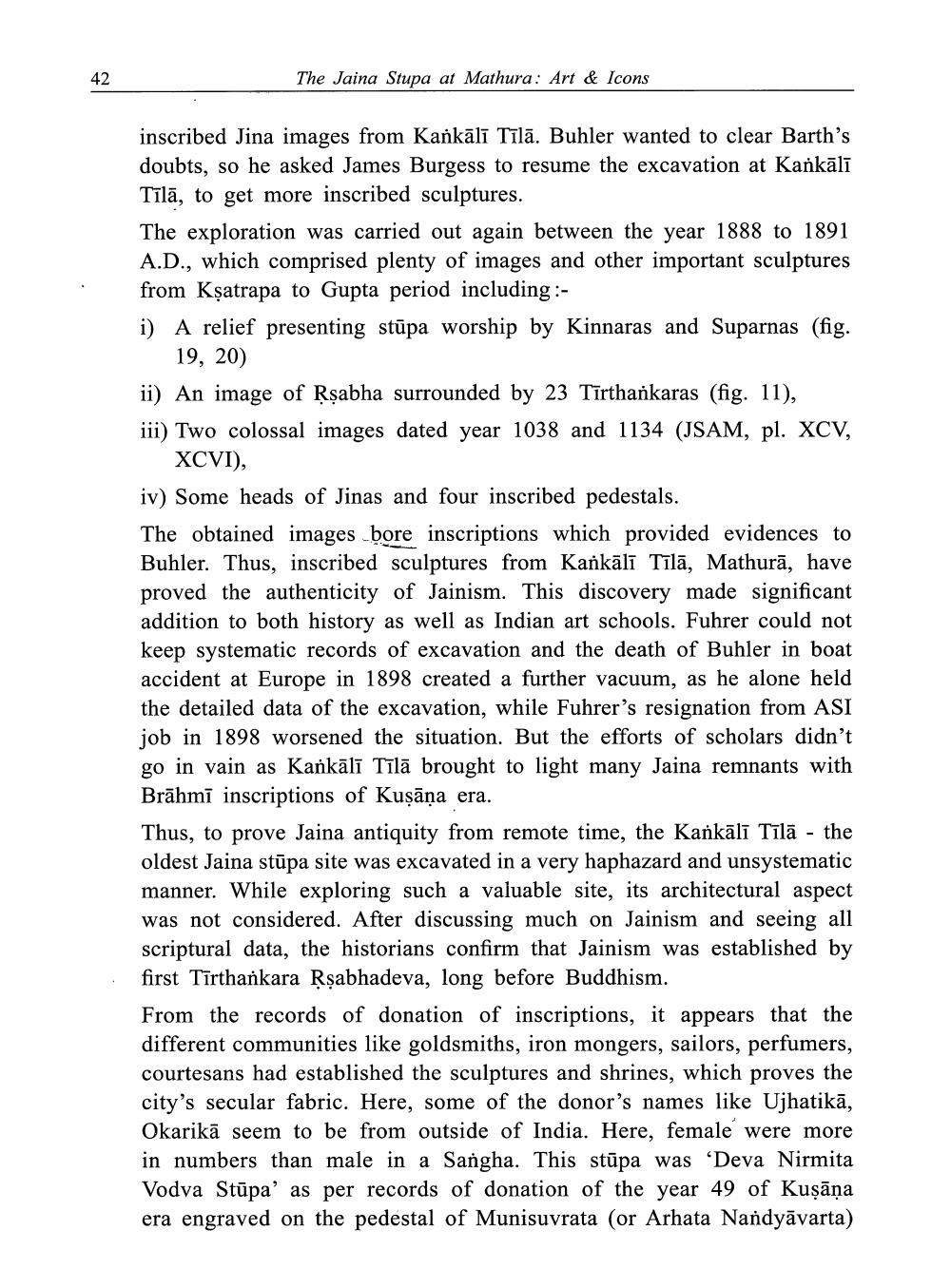________________
The Jaina Stupa at Mathura: Art & Icons
inscribed Jina images from Kankālī Tīlā. Buhler wanted to clear Barth's doubts, so he asked James Burgess to resume the excavation at Kańkālī Tīlā, to get more inscribed sculptures. The exploration was carried out again between the year 1888 to 1891 A.D., which comprised plenty of images and other important sculptures from Kșatrapa to Gupta period including :i) A relief presenting stūpa worship by Kinnaras and Suparnas (fig.
19, 20) ii) An image of Rşabha surrounded by 23 Tīrthankaras (fig. 11), iii) Two colossal images dated year 1038 and 1134 (JSAM, pl. XCV,
XCVI), iv) Some heads of Jinas and four inscribed pedestals. The obtained images bore inscriptions which provided evidences to Buhler. Thus, inscribed sculptures from Kaňkālī Tīlā, Mathurā, have proved the authenticity of Jainism. This discovery made significant addition to both history as well as Indian art schools. Fuhrer could not keep systematic records of excavation and the death of Buhler in boat accident at Europe in 1898 created a further vacuum, as he alone held the detailed data of the excavation, while Fuhrer's resignation from ASI job in 1898 worsened the situation. But the efforts of scholars didn't go in vain as Kankālī Tīlā brought to light many Jaina remnants with Brāhmī inscriptions of Kuşāna era. Thus, to prove Jaina antiquity from remote time, the Kańkālī Tīlā - the oldest Jaina stūpa site was excavated in a very haphazard and unsystematic manner. While exploring such a valuable site, its architectural aspect was not considered. After discussing much on Jainism and seeing all scriptural data, the historians confirm that Jainism was established by first Tīrthankara Rsabhadeva, long before Buddhism. From the records of donation of inscriptions, it appears that the different communities like goldsmiths, iron mongers, sailors, perfumers, courtesans had established the sculptures and shrines, which proves the city's secular fabric. Here, some of the donor's names like Ujhatikā, Okarikā seem to be from outside of India. Here, female were more in numbers than male in a Sangha. This stūpa was 'Deva Nirmita Vodva Stūpa' as per records of donation of the year 49 of Kuşāņa era engraved on the pedestal of Munisuvrata (or Arhata Nandyāvarta)




